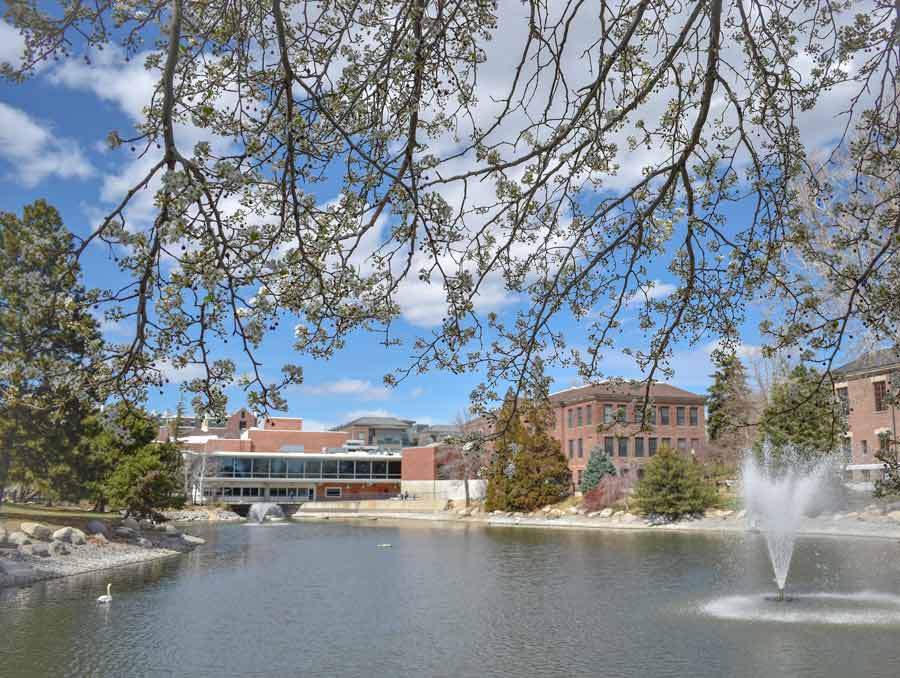The blockbuster snowpack is increasing our flood risk. As of right now, the National Weather Service has issued flood watches, warnings, and advisories for areas throughout the state.
Temperature
Winter was cold, with average temperatures from 2-3° F to more than 10° F below normal. Temperatures over a large portion of the state were in the bottom 10% of years since the 1890s. Parts of Elko, White Pine and Lyon counties had their coldest ever winter according to PRISM data. Between January and March, there were 75 days where the nighttime low dropped below freezing in Reno. The last time that happened was 1988. Elko had no above-freezing nights. Even the Airport in Las Vegas had a few nights at or below freezing, something that’s increasingly rare. Interestingly, NOAA’s Daily Weather Records report no all-time cold-temperature records, though SC-ACIS reports record lows at a few stations with relatively short records. It dropped to -31°F at Lamoille 2N on January 31. So, the overall cold is not about a few bitterly cold days but consistent cold temperatures.
Precipitation
In January, I wrote, “Fingers crossed for the rest of the winter.” Maybe I should have uncrossed them. It was a very wet winter. Central Nevada received more than twice the normal January - March precipitation—in places, it was the wettest late-winter reported in PRISM. No part of the state received substantially below normal precipitation. The parade of cold storms led to significant reductions in drought across the state. At the end of March 2022, the entire state was in at least D2-Severe Drought, and 7.5% of the state was in D4-Exceptional Drought. In late March 2023, 17% of the state had no drought, 34% was just D0-Abnormally Dry and only 5% was in D2-Severe Drought. The cold, stormy winter also led to record snowpack in many locations. By March 31 most basins had 1.5 to nearly 4 times the usual peak snowpack. The heavy snow caused significant impacts on transportation and even some structural damage to homes and businesses around Lake Tahoe.
Outlook for April – June
Across the northern third of Nevada, cooler than normal conditions are very slightly favored for spring. There are roughly equal chances of above, near or below normal spring temperatures across the rest of the state. Much of the state also has even odds of above, near or below normal precipitation this spring. In far southern Nevada, drier than normal conditions are very slightly favored. So, the usual Nevada rules apply—prepare for any kind of weather, though the large snowpack does increase flood risk this spring. La Niña is now officially over, and El Niño conditions are expected to develop over the summer. As we’ve all seen recently, La Niña and El Niño are not great predictors of whether it will be wet or dry across much of the state, so summer and fall forecasts provide little precipitation guidance. There are, however, indications that summer may be hotter than usual.
In depth - preparing for floods
Our impressive snowpack and the fact that it is lingering into the spring increase the risk of flooding. So, how best to prepare?
Stay aware of changing conditions. This spring, flooding is likely when snow melts quickly on those warm, sunny days when we all want to get outside. The National Weather Service is your best source for forecasts, watches and warnings.
Know your risks and resources. NevadaFloods.org provides information about flood zones, flood insurance, and even where you can pick up sandbags if flooding is forecast for your area.
Learn how to prepare and respond. Ready.gov provides useful tips about how to prepare your home, keep your family safe during floods and recover afterward. It’s even in multiple languages. Nevada’s Department of Emergency Management has information about putting together communication and evacuation plans and supply kits for human and non-human family members.















